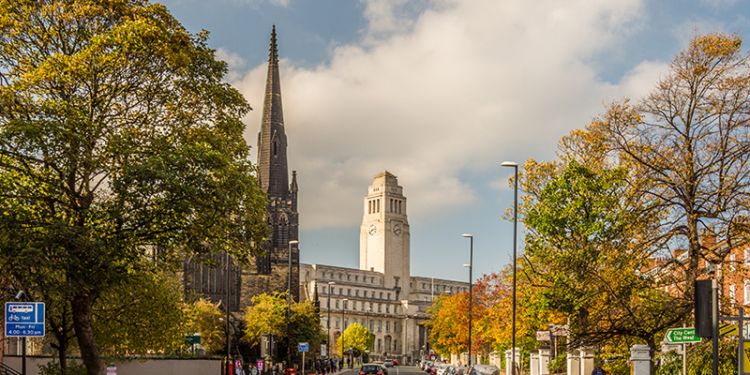Dr Katy Dutton presents her analysis of the cartulary of Kirkstead Abbey

Dr Katy Dutton from the University of Leeds gave a paper on Tuesday 25th October in the second of the Institute for Medieval Studies Research Seminar series talks.
Dr Dutton has been part of the Arts and Humanities Research Council research-funded project Sacred Landscapes of Monasticism (part of the wider Sacred Landscapes of Medieval Monastaries project) for a number of years. She has been investigating Kirkstead Abbey in particular, with the project coming to a close at the end of this year.
In her paper titled 'The cartulary of Kirkstead abbey, Lincolnshire', she discussed some of the background of the project and how it is gaining a better understanding of the ways in which monastic communities interacted with and fitted into the landscapes they inhabited. Kirkstead Abbey was founded in 1139 by a second-generation Breton lord and was one of the first two daughters of Fountains abbey. The archaeological team for the project was able to map out the area of Kirkstead and found that the original abbey was very close to the current ruin site; however, there is still some debate on the amount of overlap.
Dr Dutton then introduced the cartulary itself, a collection of around 1000 charters associated with the abbey and the wider Lincolnshire and Yorkshire area that was compiled between 1259 and 1260. It survives now as part of London, British Library, Cotton Vespasian E.xviii, in 231 folios. Dr Dutton then discussed, in great detail, the accomplishments of the compiler, who in her words was very organised in his work. She explained how this compiler would wrap together previous copies of charters into gatherings of five bifolia adding his own copies and information to the bundles as he did so. She appraised the comiler’s attention to detail and explained that her analysis of how he organised the cartulary would be included in the publication of the project’s findings.
She concluded by giving some understanding as to why such a cartulary was necessary. Kirkstead Abbey sits encircled by watercourses and also very close to the estate lands of Tattersall Castle, which was owned by the de Tattershalls in the twelfth- and thirteenth-centuries. The abbots and the de Tattersalls were involved in intense legal negotiations over land use, incuding the use of forest land adjacent to the abbey as a park for deer hunting. The cartulary records the legal and physical confirmation of the boundaries of the abbey and the agreement between the abbots and the local lords regarding what happened on either side of this boundary.
The Kirkstead Cartulary then, according to Dr Dutton, was created to cement the boundaries of the abbey and establish the churches rights to the land they inhabit. It also allows us to explore the relationships between the monks of the abbey and the lords of Tattershall.
At the end of the paper there was a lively discussion about this very fascinating cartulary, with many people in the audience contributing questions and comments.
The next talk in the Institute for Medieval Studies Seminar Series will be on Tuesday 8th November, when Adam Simmons from Nottingham Trent University will be giving a paper an Rethinking and redating the fall of the Nubian kingdom of Dotawo. For more information about this and the other talks in the series, check out the Whats on at Leeds page.




